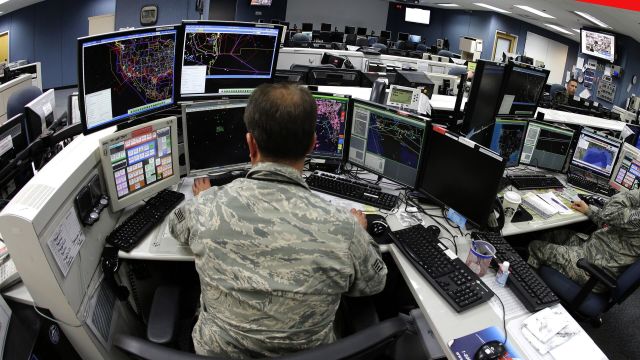MOSCOW, Apr 29 — RIA Novosti, David Narmania. "Whoever becomes a leader in the field of artificial intelligence will be the ruler of the world," Vladimir Putin said six years ago. Since then, AI has come a long way, including in the military sphere. About the application of these developments — in the material of RIA Novosti.
"Dead Hand"
The authoritative magazine National Defense published an article where he talked about a "living laboratory for AI." We are talking about the conflict in Ukraine.
One of the most developed areas where artificial intelligence is used is intelligence and target recognition. For example, as the publication notes, it is used to determine geolocation based on photos from open sources. Or for face recognition. The program used by the APU was created by the American company Clearview AI.
However, when it comes to AI, it is very difficult to say exactly where its "field" is. A computer in a broad sense has been used by the military for a very long time — automation, for example, helps to identify targets and aim missiles at them. But he is capable of solving more complex — and sinister — tasks.
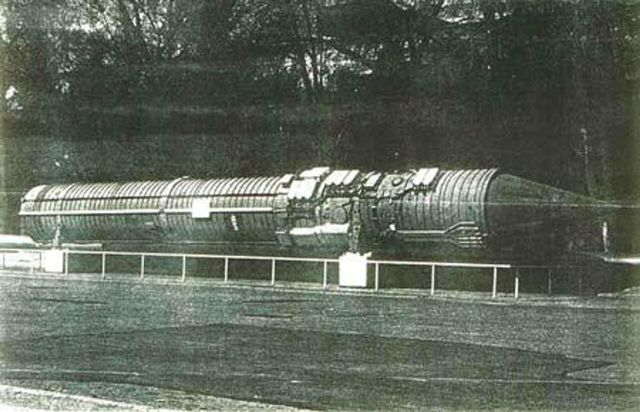
Command missile 15A11 of the Perimeter system Image source: © Photo : USSR Ministry of Defense
The domestic Perimeter system, created back in the Soviet Union, was dubbed the "Dead Hand" in the West. This is a complex of automatic control of a massive retaliatory nuclear strike.
In a war of annihilation, the key goal, as you know, is the control centers. The task is to decapitate the enemy troops and not give them the opportunity to react. This is exactly how the "Perimeter" works. Having detected signs of a nuclear strike, the complex sends a request to the General Staff. If the answer is not received, he turns to his "colleague" — the Kazbek strategic missile control system. It is she who is carried in a nuclear briefcase next to the president by an officer in a naval uniform. If she does not respond, the Perimeter makes its own decision. But to do this, its sensors must detect a nuclear bombardment. Only after the first strikes are the ballistic control missiles launched. In other words, revenge is guaranteed.
However, even such a complex system, according to experts, is not yet artificial intelligence.
As Major General, Doctor of Technical Sciences Vasily Burenok notes in an article for "Military Thought", automation of control processes in military terms involves the use of computers to collect information, classify it and further decision-making by people. But in the case of artificial intelligence, the computer itself makes decisions in conditions of uncertainty, when not everything is known about the events taking place.
The first scandals
Therefore, AI began to be used primarily in order to dispel the notorious "fog of war". One example is the Pentagon's multimillion—dollar Project Maven initiative.
The project should become the new "eyes" of the military. A person is not able to process a huge number of videos and photographs from American satellites and reconnaissance drones — that's why they attracted an assistant.

Google logo at the headquarters building in Mountain View, California, USA Image Source: © AP Photo / Marcio Jose Sanchez
It is with this project that the first high-profile scandals around ethics issues are connected. Employees of Google, which acted as one of the Pentagon's contractors, filed a petition in April 2018 to protest against the company's participation in the creation of military technologies. The letter was signed by about four thousand people. When there was no reaction, several dozen of them quit.
Nevertheless, a few months later, the IT giant refused to renew the contract with the US Department of Defense. The contract expired in March 2019.
The cost of a contract for such a corporation is small: Forbes reported about $ 15 million. However, Google's place was taken by competitors — Microsoft and Amazon. They earned a total of 50 million and want to continue to cooperate with the Pentagon.
Learn to fly on his own
We didn't stop at target recognition. Already in 2020, the United States signed a contract to equip MQ-9 Reaper drones with artificial intelligence. General Atomics received $93.3 million for this.
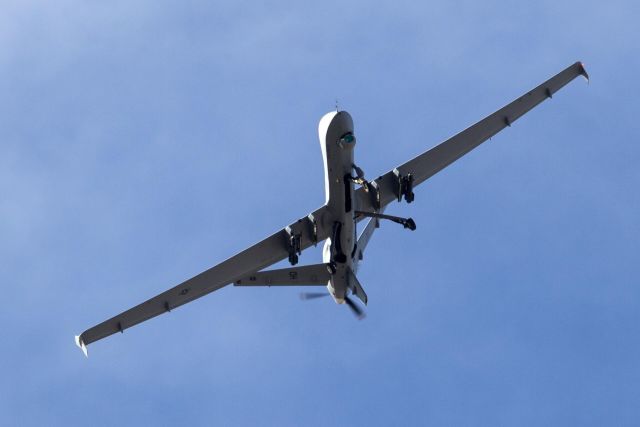
MQ-9 Reaper Drone Image source: © iStock.com / BlueBarronPhoto
Now the company is developing a technology that will allow the UAV to go offline — to fly independently, select tracking objects and process data.
In the future, they want to train artificial intelligence to control a swarm of drones. Developments in this area are already underway .
Death from Heaven
However, the management of individual UAVs is also being improved. Last week, the Russian company "Unmanned Vehicles" presented a prototype of a K-5 jet FPV kamikaze drone. It can recognize thermal signatures and visual images. In other words, the operator must take him to the area where the target is located, and K-5 will find it and destroy it himself.
At the same time, individual samples are already superior to humans in controlling drones. According to the South China Morning Post, in March, the Chinese military simulated the battle of strike groups controlled by AI and humans.
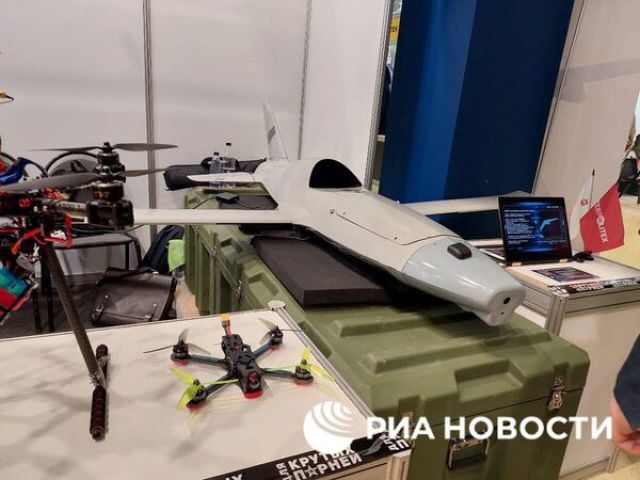
Prototype of a kamikaze jet FPV drone (barrage ammunition) of the Unmanned Aerial Vehicles company Image source: © RIA Novosti
And the computer did not leave a chance for a person — despite the fact that at first he seized the initiative using different tactics. But artificial intelligence quickly corrected the situation, managing to go to the opponent's tail. The operator could not break away from him, although he maneuvered for a minute and a half. This is an eternity for a battle, the outcome of which is sometimes decided in a split second.
Commenting on the experiment, the researchers express the opinion that the bet on aircraft capable of hitting targets from afar is a dead—end branch of the development of combat aviation.
"Thanks to stealth and electronic countermeasures technologies, 25-40 percent of air battles in the future will be conducted at close range," experts emphasize.
The machine controls the machine
And artificial intelligence is already fully equipped for such battles. Moreover, we are talking about full-fledged combat aircraft.
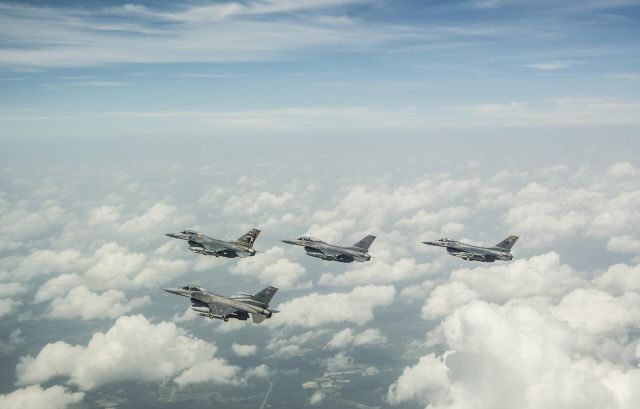
A group of four F-16 Fighting Falcon fighters of the US Air Force Image Source: © Photo : U.S. Air Force / Tech. Sgt . Gregory Brook
In 2020, the Defense Advanced Development Agency (DARPA) of the US Department of Defense held an AlphaDogfight Trial competition. The participants — eight development teams — created a program capable of controlling a fighter. We tested the offspring on a FlightGear simulator simulating the F-16.
In the finale, their creations fought with each other. The winner was the AI from the Heron System company, which then clashed with an experienced Air Force pilot. The confrontation ended with a score of 5:0 in favor of the program.
New challenges
But it's one thing to control a drone, a fighter jet or even a swarm of drones, and another is fighting. In the current conflict in Ukraine, UAVs already allow monitoring the situation, but people are still leading the process. In the future, they propose to shift this function to artificial intelligence.
And he is already being gradually attracted to conducting command and staff exercises.
The ability of AI to manage units better than humans was confirmed several years ago. In 2019, the program from Elon Musk's company Open AI defeated the current world champions in the Dota 2 game - the OG team. And in open-access matches, when any players could challenge the car, the victory rate was 99.4 percent. This confirmed the computer's ability to cope with tasks in conditions of limited information.
The further development of artificial intelligence, according to experts, can lead to a revolution in military affairs comparable to the invention of gunpowder and nuclear weapons. However, another analogy seems much more appropriate — the development of fire. This allowed man to become the king of nature. Now there are fears that people will be displaced from the throne by the tool they created — if they give him unlimited access to weapons.
